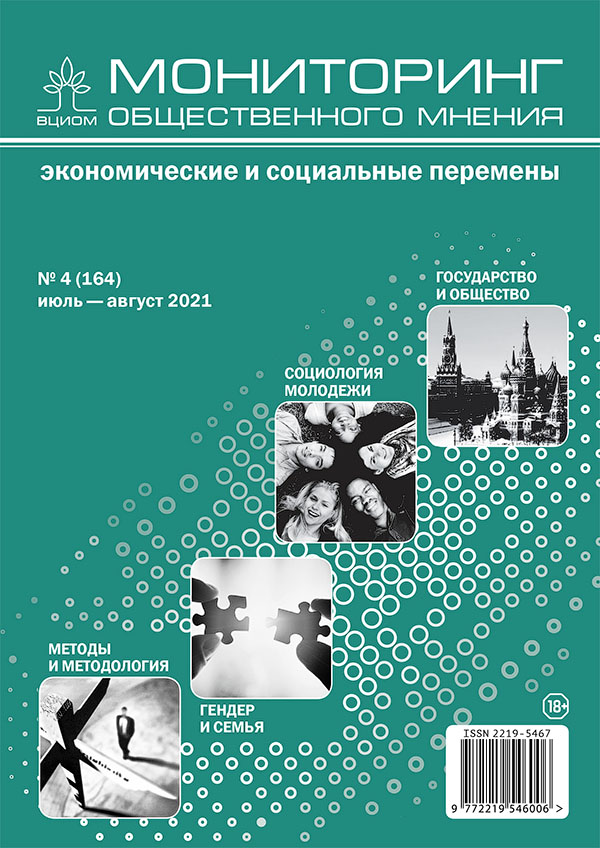Perception of Disorder and Social Control in the New Condominiums: Results of a Sociological Study
DOI:
https://doi.org/10.14515/monitoring.2021.4.1918Keywords:
social disorder, physical disorder, condominium, parochial control, public controlAbstract
The article studies the perception of safety, social and physical disorder by the local inhabitants, and of the forms of social control over this disorder in the two enclave neighborhoods. The authors derived a set of hypotheses from the theoretical propositions regarding the spread of social disorder and social control. The study employs the survey data collected across the inhabitants of two condominiums, «Severnaya dolina» located on the outskirts of Saint Petersburg and «Sem’ stolits» located in the Leningrad region. The authors examined the relationship between the demographic, social, and economic composition of the residents and their perceived safety, the connection between the perceived safety of the residents and observation of the social or physical order, and the state of social control in case of offenses or violations of social norms.
Descriptive statistics (chi-square test, t-test, ANOVA) and binary logistic regression were used as data processing methods. The authors conclude that (1) having children leads to greater anxiety about the safety of the neighborhood; (2) lack of places for safe evening walks, problems with crime and violations of social order lead to a decrease in the perceived safety of the residents; (3) residents do not distinguish between social and physical disorder, it is important for them whether the violation poses a potential threat to personal safety; (4) serious violations of the physical order create a general feeling of various norms violation, including in the form of crimes; (5) social capital is not associated with local social control; (6) willingness for local control is related to perceived security only in case of the violations of social order; (7) lack of public control (police responsiveness) can be compensated for by parochial control by residents.
When comparing the effects, the authors find that perceived safety is associated with the observed violations of the physical order, the willingness to let the child go for a walk alone, the residents' accumulated social capital, and the length of their residence.
Downloads
Published
How to Cite
Issue
Section
License
Copyright (c) 2021 Monitoring of Public Opinion: Economic and Social Changes Journal (Public Opinion Monitoring) ISSN 2219-5467

This work is licensed under a Creative Commons Attribution-NonCommercial-ShareAlike 4.0 International License.






